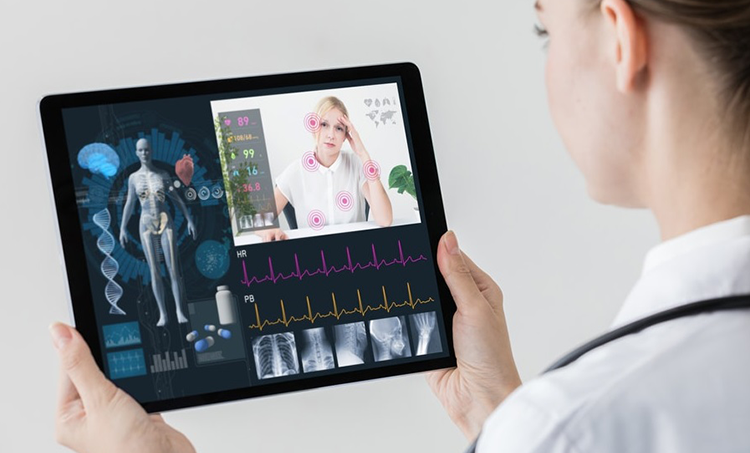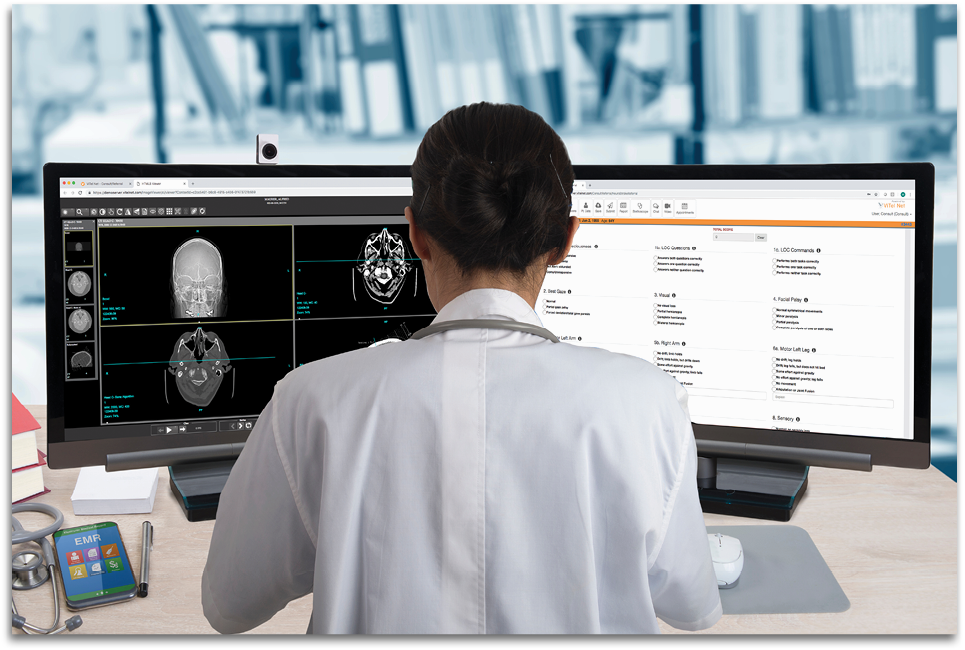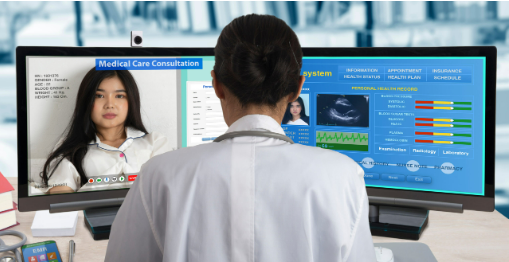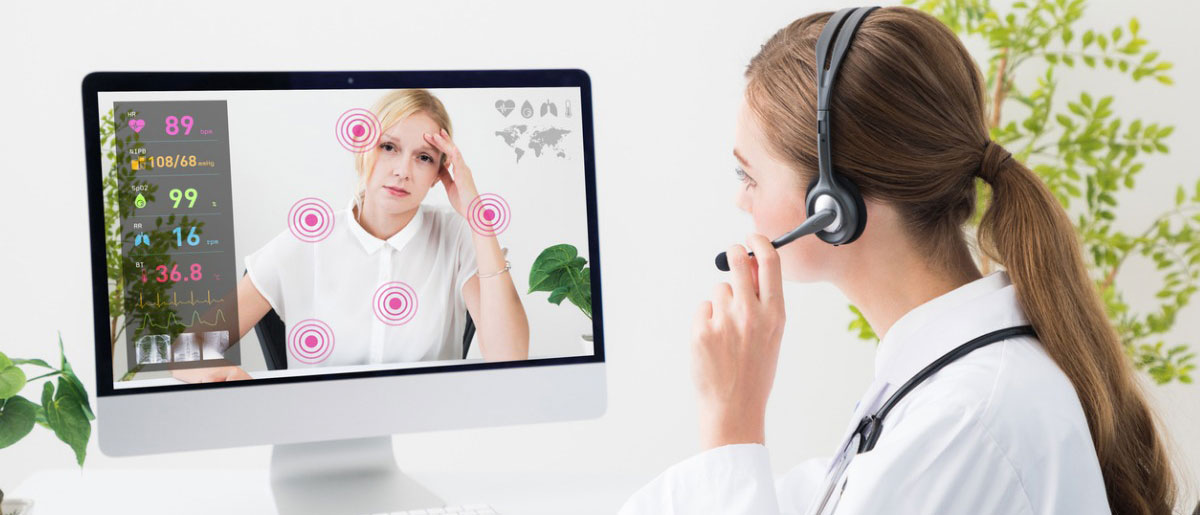Consumers have come to expect the same level of service from their healthcare experiences as they have in their retail experiences. This means they want the same level of convenience, the same access to information, and the same focus on quality.
The challenge in healthcare is that patient data like medical history, images, and test results can be hard to access in real time at the point of care. Providers often have to log in to multiple systems to search for the information they need, or they have to contact other providers to request a copy of the data. All of this is not only inefficient, but it also can inhibit timely access to care for the patient. And it can be especially challenging when providing virtual care where a patient may be located at home or in another care facility.
How Clinicians Benefit from Virtual Care Platform
What clinicians need is a way to seamlessly access data through a single system—a virtual care platform—where clinical workflows are enhanced through greater efficiencies. For example, in the case of an individual having a stroke, a responding EMT would alert a nearby hospital. The hospital would generate a stroke order within its local EHR, which would then automatically create an encounter within the virtual care platform. A consult request would be generated and sent to a neurologist.
At the same time, the EMT records the patient’s vital signs within the platform, making it accessible to the neurologist and the entire care team. If a patient’s family member has access to their loved one’s health data within a health app, they can forward that information to the care team through the platform’s patient portal.
As the patient is being transported to the hospital, the neurologist can view all of the patient’s data and immediately launch a video conference with the EMTs in the ambulance. Once the neurologist assesses the patient’s condition, they can confirm a stroke and order corresponding tests. This allows the patient to go directly to radiology upon arriving at the hospital, without having to be seen and assessed within the emergency department. This saves precious time that is so critical for conditions such as a stroke where every second counts.
Once the imaging tests have been completed, the remote neurologist can initiate a teleconference with the hospital’s care team at the patient’s bedside. Together, the neurologist and the local physician can develop the most appropriate care plan for the patient.
A virtual care platform enables all care team members to virtually access the patient’s and begin triage and treatment within seconds of an event.

Patient Monitoring
Patient monitoring is another application of a virtual care platform, providing an invaluable way to connect patients and their families with the best clinicians and specialists regardless of location. In an emergency department, clinicians can connect with emergency medicine physicians or specialists right at the patient’s bedside. This reduces delays in care and improves accuracy of the diagnosis for a more effective care plan. The patient’s family can be a part of the evaluation and conversation, even if they’re not able to be present, which helps improve medication and care plan adherence.
Having access to the right providers, whether in the ED, at home, or at another healthcare facility, allows for more proactive interventions. This, in turn, reduces preventable complications, readmissions, or visits to the ED. This is especially beneficial during transitions of care, such as when a patient is discharged from a hospital. Research has shown that almost 20% of patients experience some type of adverse event within just the first three weeks after discharge, with the majority of those events being preventable.

Patient-Provider Portal
Consumers use digital technology, including portals, in many parts of their lives. A virtual care platform brings those same digital tools to healthcare as well. Having a single place, available on a secure app, where providers can connect and engage with their patients helps improve the patient experience while streamlining provider workflows.
Patients can use the portal to enter their trigae information, upload a picture of their insurance card, and even take pictures within the app that might help the provider with the diagnosis. Once information is entered, the patient enters a “virtual waiting room” where they’re receive automated messages about their approximate wait times.
Providers are notified when a patient has entered the “waiting room” and are able to review the patient’s information and any pictures they’ve uploaded. This gives providers information up front without having to spend time during the virtual visit to capture that information. This seemingly simple feature sets the stage for a positive patient experience, right from the start.
A virtual care platform also allows providers to easily access the patient’s health record during the visit right in the same portal on the app, reducing the need to take notes and then chart the encounter later. They can also order tests and write scripts on the spot. This not only saves time, but also reduces delays in care.

Data Analytics
To achieve optimal value from a virtual care platform investment providers need to be able to regularly monitor and evaluate the technology’s impact. It’s the only way to proactively identify opportunities for improvement and to receive full ROI from the solution. The best virtual care platforms have built-in analytics tools that make this possible.
The most effective solutions enable providers to measure encounters and appointment types by locations, providers, and specialties, as well as by top procedures and diagnosis codes. They also provide insight into clinical outcomes across patient populations and specialties. Leveraging analytics via a virtual care platform gives providers the information they need to measure financials by reimbursement data, revenue and payer mix, and to view reimbursements by provider, payer, diagnoses, and location as well.
A New Approach with Virtual Care
A virtual care platform gives providers and care teams the ability to effectively collaborate on a patient’s care by giving them access to the information they need—within a structured clinical workflow—at the moment it’s needed. It enables virtual teams to schedule, triage and provide video encounters between themselves, their patients, and the patient’s family. The result is improved outcomes, lower costs, and a better patient experience. VidyoHealth can help.
The VidyoHealth Virtual Care Platform is a flexible, scalable, and intuitive solution that enables providers to deliver fast, easy, and reliable virtual care experiences to their patients—from acute care settings to home environments. Vidyo’s best-of-breed, end-to-end virtual care platform can be fully embedded into workflows to make virtual care easy and efficient for both patients and providers.
